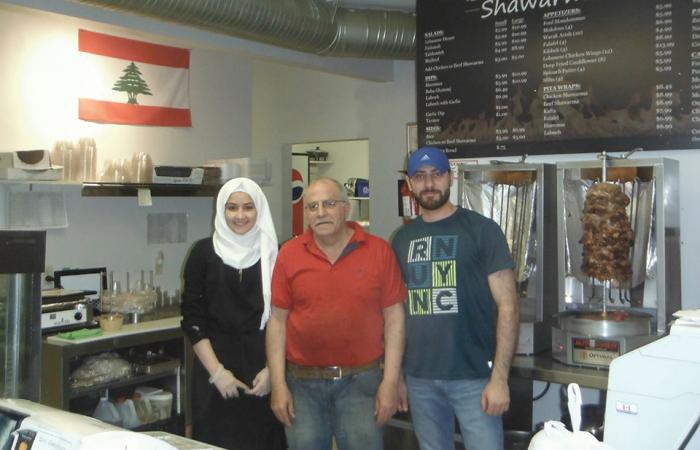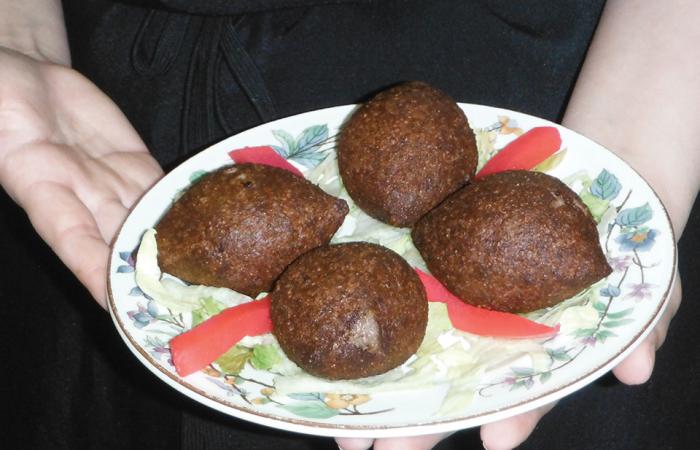“I wonder if we were to settle our differences around a dinner table, enjoying the dishes each culture has to offer, if there would be more content stomachs, less war, and more peace.”
~ Anonymous
Imagine this scene: All of the world leaders gathered together to enjoy a smorgasbord, each bringing his or her favourite dish to share. Theresa May would more than likely bring a lovely roast with Yorkshire pudding and gravy on the side, Prokopis Pavlopoulos, a plate of dolmadakia, and Sauli Niinistӧ would swear his korvapuusti were better than any other countries’ cinnamon buns.
The leaders would take their places at the round table (to ensure no one would fight to sit at the head) and the meal would begin. Dishes would be passed around, each leader taking a spoonful of this, a forkful of that, and the conversations would start:
“Hey Justin, try this Quadruple Bypass Burger. It’s a real favourite of mine.”
“Well, Donald. It sounds kind of risky. But if you insist. Here, try my poutine. Sophie said I should add this nice organic local cheese made from real Canadian dairy and I do believe it’s quite delicious.”
And, further around the table, another conversation: Hey Vladimir, try this pirozhki. The pastry is as light as an angel’s wings.”
“Well certainly Vladimir. It’s one of my favourites. Do you want some more sour cream for your borscht? Perhaps some kalash? Aren’t those beets something else? Straight from my garden and into the pot!”
And then in the midst of swapping recipes, invitations would be put out to visit homes, meet the families, and try other dishes. There would be no discussions of war or land take-overs or assembling of nuclear bombs, because the only concerns would be how much curry was added to a dish or the duration the lamb should be marinated in the garlic sauce. Wouldn’t that be nice?
Although one may chuckle at the thought, could this idea have some merit? Do full stomachs not spell contentment? Is the enjoyment of a different culture’s cuisine not the start of an acceptance, a respect for that ethnicity? Perhaps there is something to this thought.
Thunder Bay, like so many cities in Canada, is multicultural. Matter of fact, it is estimated that there are over 70 ethnic groups here. Honest. Our city has grown and diversified.
Along with this growth is the increased diversity of the foods available in the grocery stores, the number of ethnic restaurants, and the many different smells drifting from open kitchen windows. It is wonderful.
And wouldn’t it be lovely to learn how to make these dishes? Diversify your menu, so to speak.
Tucked away on the corner of High and Parsons is Best Bite Shawarma, a quaint restaurant offering Lebanese/Middle Eastern cuisine. While some items on the menu are familiar like the falafel, hummus, and shawarma, others like the makdous, kafta, and kibbeh get a second glance by most patrons.
When asked what recipe Best Bite Shawarma would like to share with Bayview readers, owner and chef, Tony Skaf, had no hesitation. “Kibbeh, of course. It is a favourite of the Lebanese and Syrian people, so much that people from different villages often have friendly competitions for bragging rights. It is a food,” he says, “that reminds me of my homeland, Lebanon, that I had to leave when I was 20 because of the civil war.”
In the late 1970’s, Skaf’s family sold everything they had, including their wholesale grocery business, and immigrated to Canada to settle in Geraldton where they set up another grocery store. It was a challenging time, learning how to speak English and trying to fit in. When asked what he misses the most about Lebanon, Skaf replies, “Everything. Everything.”
Kibbeh looks somewhat like an elongated chicken ball and relies on beef or lamb and middle eastern spices like cumin, cloves, and cinnamon to give it its unique flavour. Although the recipe has changed over the years, the old-fashioned method of preparing the meat is still preferred.
Tony Skaf's Kibbeh - a popular Lebanese treat
To make the Kibbeh dough:
Soak 1/2 lb bulghur cracked wheat in cold water for 1/2 hour and then drain through a cheesecloth. Cut 1lb of lamb or beef into chunks and throw into a stone bowl with chunks of ice. Using a meat mallet, crush the meat adding more ice and meat as you get the desired texture resembling ground beef. Note: this method was used when refrigeration did not exist and cooks were careful to keep their meat cool in hot weather. Today’s chefs can simply use a meat grinder or buy ground beef or lamb at the grocery store. Spice the ground meat with 1 tsp salt, 1 tsp pepper, 1/4 tsp cloves, 1/4 tsp cinnamon and 1 medium size onion, chopped. Add bulghur cracked wheat and mix. Form into large sized meatballs, about the size and shape of a chicken egg, and set aside. This is the mixture for the shell of the Kibbeh.
Kibbeh filling:
Fry one medium onion, coarsely chopped, in oil and add 1 lb ground beef or lamb, ½ tsp salt, ½ tsp pepper, 1 tsp allspice, ¼ tsp cumin and ½ cup chopped roasted pine seeds. When cooked, set aside to cool then form into balls about the size of a large crock marble. Make a dent in the egg-shaped meat (the dough) and form a hollow. Place the crock sized meat ball into the hollow and pinch the shell closed. Fry the Kibbeh in fresh oil in a frying pan, BBQ, or simply cook in a casserole dish at 375° until done. Serve with hummus, yogurt, or Ranch salad dressing for dipping. Astamtae! Enjoy!
For your next get-together, why not invite your friends to bring their favourite ethnic dishes and host your own cultural dinner? Who knows, Justin may show up with his poutine.
If you’d like to share your favourite ethnic recipe with Bayview readers, please contact Donna at info@donnawhitebooks.com





